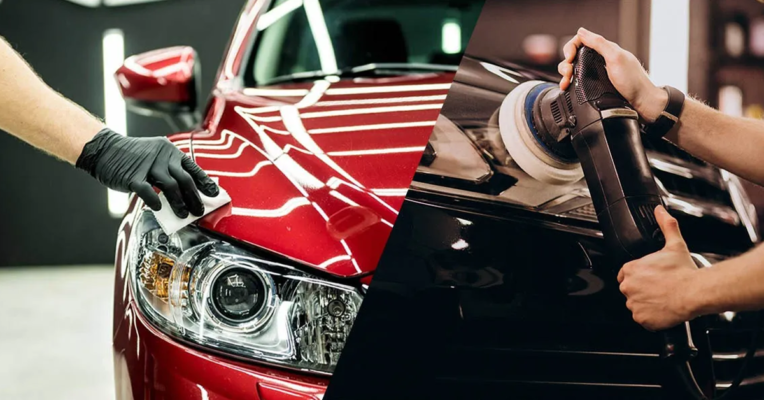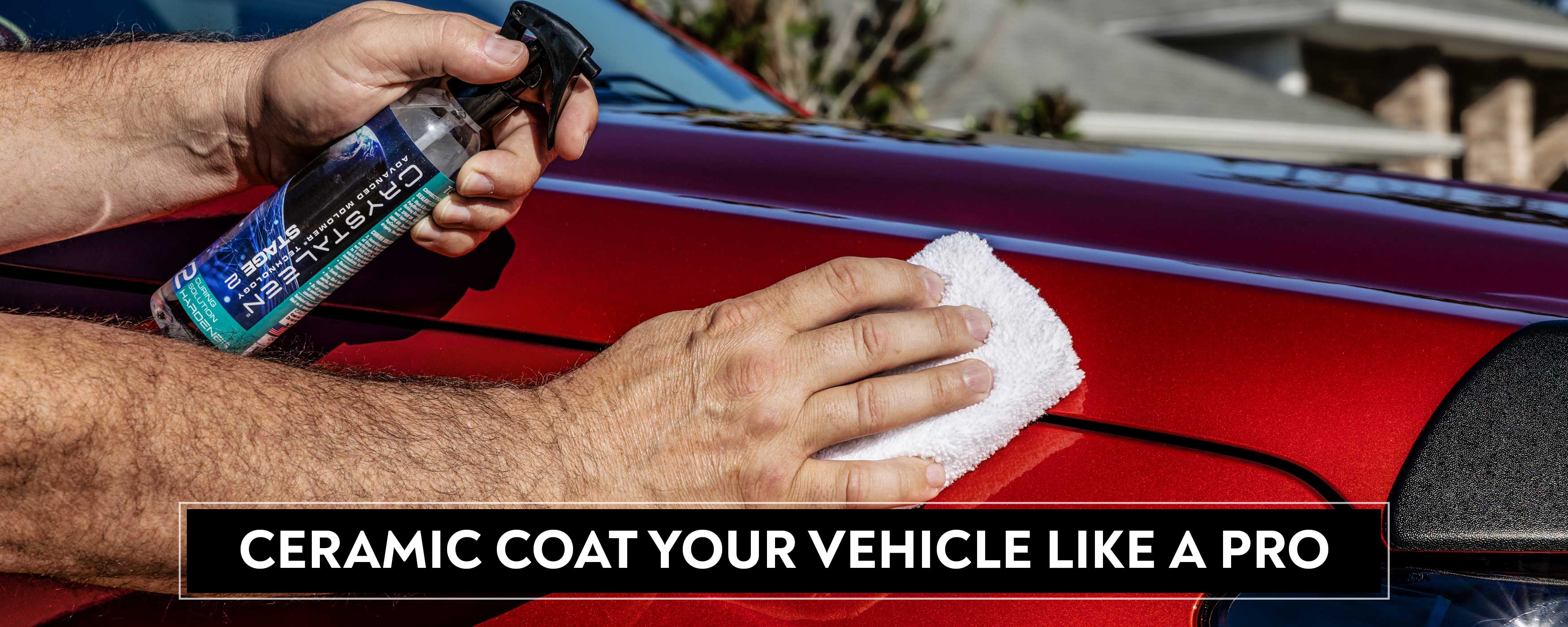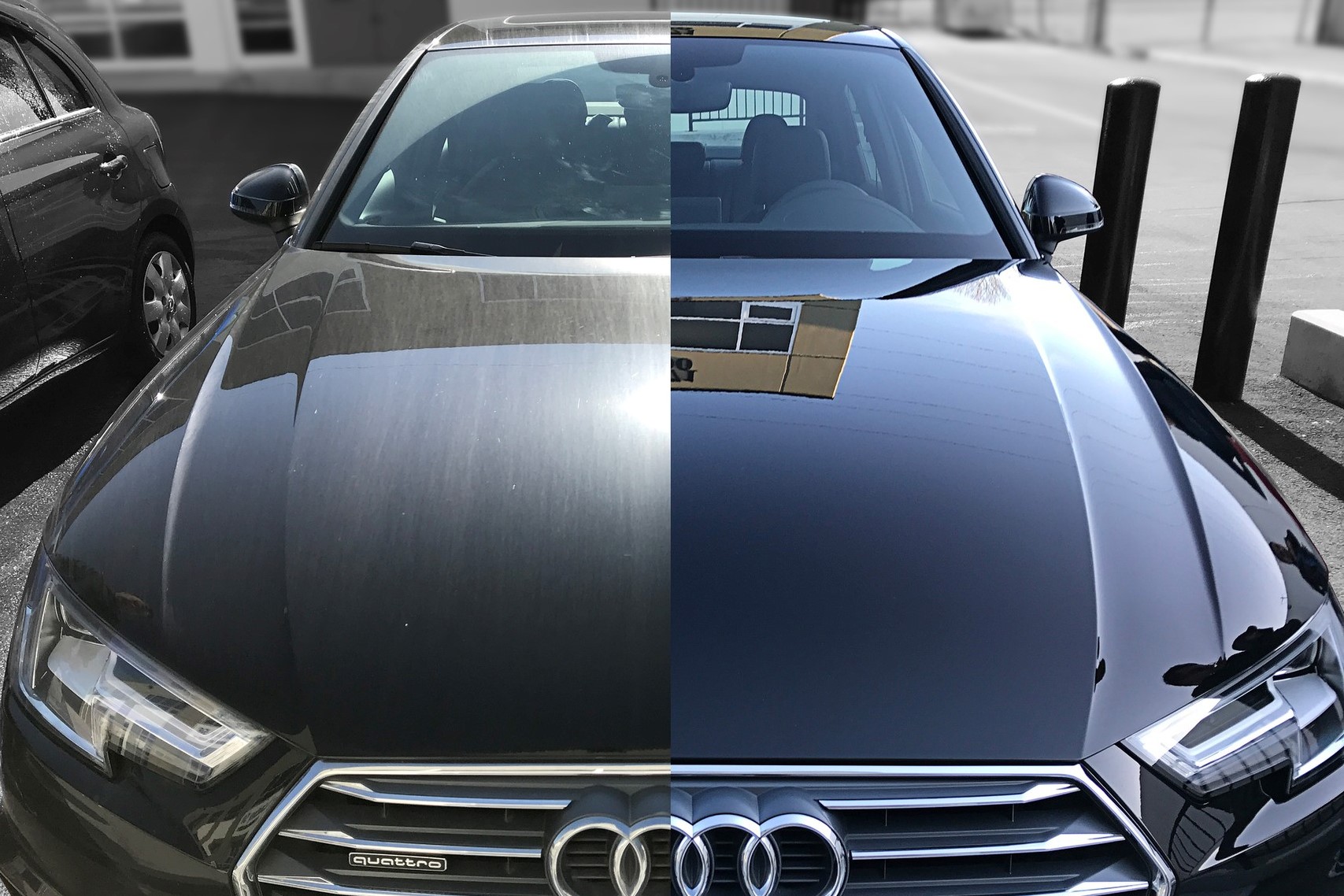Ceramic Pro Coatings: Resilient Sparkle and Toughness for Your Vehicle
Ceramic Pro Coatings: Resilient Sparkle and Toughness for Your Vehicle
Blog Article
The Scientific Research Behind Ceramic Finishing: Exactly How It Boosts Your Car's Aesthetic and Resilience

Comprehending Ceramic Covering Chemistry
The chemical structure of ceramic finishings plays a critical role in determining their durability and protective homes on car surfaces. Ceramic finishes are usually composed of silicon dioxide (SiO2), which is a key part providing firmness and heat resistance. Other ingredients such as titanium dioxide, silicon carbide, and polysilazanes are commonly contributed to improve specific residential or commercial properties like UV hydrophobicity, bond, and resistance.
Silicon dioxide, also called silica, forms a transparent and solid layer on the vehicle surface area when applied properly. This layer works as a guard, protecting the paint from ecological pollutants, UV rays, oxidation, and chemical spots. Titanium dioxide helps in obstructing hazardous UV rays that can cause paint fading and deterioration. Silicon carbide is understood for its abrasion resistance, making the ceramic covering durable and hard versus physical damages. Polysilazanes are made use of to boost the finish's versatility and attachment to the vehicle's surface area, making sure lasting security. Comprehending the chemistry behind ceramic finishes is important for both applicators and automobile owners to value the worth and advantages these finishings provide in maintaining the aesthetic charm and durability of vehicles.
Enhanced Gloss and Mirror-like Finish
Recognizing the chemical structure of ceramic coverings not only reveals their protective buildings but also loses light on how they contribute to achieving an improved gloss and mirror-like surface on car surface areas - ceramic pro. Furthermore, the chemical framework of ceramic layers permits them to develop a solid bond with the vehicle's paintwork, avoiding oxidation and preserving the quality of the surface over time. The mix of filling up buildings, light reflection, and resilient protection makes ceramic coverings a preferred option for those looking for a lively and mirror-like finish for their cars.

Impact on Paint Protection and Long Life
Ceramic coverings for cars substantially enhance the longevity and defense of the paintwork. By developing a chemically resistant layer in addition to the vehicle's clear layer, ceramic layers function as a barrier against different environmental pollutants that can damage the paint over time. These coatings are created to fend off dirt, water, roadway salt, bird droppings, and various other unsafe materials, reducing the threat of paint oxidation and corrosion. Furthermore, the solidity of ceramic coatings supplies a degree of scrape resistance, aiding to keep the automobile's appearance for an extensive duration.
In terms of long life, ceramic coverings supply a sturdy service compared to typical waxes or sealants. Generally, the protective residential or commercial properties of ceramic coverings contribute significantly helpful hints to protecting the vehicle's paintwork and boosting its aesthetic charm over an extended duration.
Resistance to Impurities and Harsh Elements
With the protective shield given by ceramic finishes against different ecological pollutants and aspects, cars are able to preserve their excellent look despite direct exposure to extreme conditions. Ceramic coverings create a strong obstacle that fends off water, dust, dust, and various other usual pollutants, avoiding them from bonding to the automobile's surface area.
In addition, ceramic finishings use UV defense, protecting the lorry's paint from the sunlight's damaging rays that can cause fading and oxidation. This resistance to UV damages helps keep the shade strength and sparkle of the paint for longer durations. By developing a long lasting and resilient barrier, ceramic finishings guarantee that the automobile's outside continues to be safeguarded versus a variety of contaminants and severe elements, protecting its visual appeal and longevity.
Application Methods and Maintenance Tips
For ideal results when applying ceramic finishings to cars, making use of appropriate techniques and adhering to recommended upkeep techniques are important. The application procedure of ceramic layer requires interest to detail and accuracy. Prior to using the ceramic coating, it is crucial to completely tidy and decontaminate the vehicle's surface to make certain proper bond. This involves washing, claying, and potentially polishing the paint to produce a smooth canvas for the ceramic finishing to bond efficiently.
When applying the ceramic coating, it is suggested to operate in tiny sections to make sure even protection and to prevent the product from drying as well quickly. Using applicator pads or microfiber cloths, use the covering in a crisscross or up-and-down motion, depending upon the product's guidelines. After the covering is used, permit it to heal for the defined time prior to buffing off any see it here deposit.
In terms of upkeep, routine washing with pH-neutral soaps and avoiding rough chemicals or unpleasant devices will certainly assist protect the ceramic finish's stability. Periodic assessments for any kind of damages or use on the layer can additionally assist maintain its safety residential or commercial properties with time.

Final Thought
Finally, ceramic layer boosts a car's aesthetic appeal and toughness via its chemical structure, supplying a glossy finish and safeguarding the paint from environmental contaminants. Its resistance to rough elements and simplicity of upkeep make it a preferred choice for automobile owners wanting to maintain the look of their cars. On the whole, ceramic finishing is a scientifically backed option for maintaining the appearance and longevity of your vehicle.
Understanding the chemistry behind ceramic layers is essential for both applicators and vehicle proprietors to appreciate the value and advantages these finishings provide in keeping the aesthetic allure and long life of vehicles. (ceramic pro)
Recognizing the chemical make-up of ceramic finishes not only reveals their protective buildings yet additionally drops light on how they contribute to achieving an enhanced gloss look at these guys and mirror-like coating on lorry surface areas. By creating a chemically resistant layer on top of the vehicle's clear coat, ceramic layers act as an obstacle versus various environmental contaminants that can harm the paint over time. Overall, the safety residential or commercial properties of ceramic layers add considerably to protecting the car's paintwork and boosting its aesthetic allure over a prolonged period.
In conclusion, ceramic finishing improves an automobile's visual appeal and sturdiness through its chemical composition, giving a shiny surface and shielding the paint from environmental pollutants.
Report this page